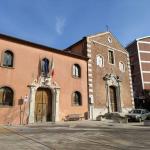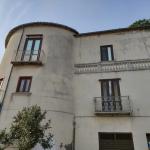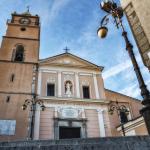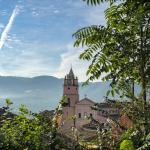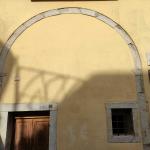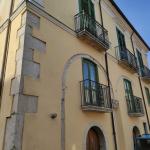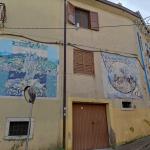The Municipality of Montefalcione rises in the area between the Sabato Valley and the Calore Valley. It's a town with 3,244 inhabitants, located 523 metres above sea level, at 14 km from Avellino. The territory extends for 15.29 sq km and the adjoining municipalities are: Candida, Lapio, Montemiletto, Parolise and Pratola Serra. It's crossed by the Sabato river.
The etymology of the name seems to come from the union of "monte" (mount) with the name of plant felix, meaning fern, or falx, meaning "sickle"; according to others it could derive from the personal name Felix, or from Mons Falconis (Mount of Falcone). The inhabitants are called Montefalcionesi. Saint Anthony of Padua and Saint Lucy are their patrons.
PLACES OF INTEREST
- Sanctuary of Sant'Antonio (Saint Anthony) - Built on the structure of the church dedicated, in the beginning, to Saint Mary of the Assumption, it stands out for the majestic bell tower that flanks the façade, for the bronze portal and for the works of art kept inside
- Church of Santa Maria di Loreto - Part of a religious complex of the 16th century in which the current town hall is located, the Church is characterized by the presence of numerous altars inside
- Castle - Built in the Lombard age, as a fortress, and then became a noble palace, it's distinguished by the circular tower, visible on the eastern side and incorporated into the current building
- Porta della Ripa (Ripa Gate) - Dating back to the 12th century, it represents the main access to the medieval village
- Church of San Giovanni Battista (Saint John the Baptist) - Dating back to the late 17th century, it is accompanied by the characteristic stone entrance portal
- Capone Palace - It dominates the central square and was built in the 19th century: it has a stone staircase and a private chapel
- Other churches - Brotherhood of Good Death, Confraternity of Our Lord Jesus Church of Santa Marina
EVENTS
- Montefalcione Fireworks - Spectacular fireworks competition on the last Sunday of August, on the occasion of the patronal feast of Saint Anthony and Saint Lucy
- Feast of Saint Felician the Martyr - Religious procession, scheduled for May
- Feast of Saint Anthony of Padua - Religious celebrations in honour of the patron saint, scheduled for June
- Patronalis Street Fest - Musical review, scheduled in August
- Feast of Saint Pius - Religious celebrations, scheduled for July, in the San Fele district City of Montefalcione
- Grand Band Concert - Musical event that takes place annually
- Via Crucis - Religious event, scheduled for the Easter period
TYPICAL FOOD AND PRODUCTS
- Fiano di Avellino DOCG - One of the finest white wines in Italy and on the international market
- Taurasi DOCG - Wine of great tradition, made thanks to a very ancient grape variety: well structured, elegant and austere but at the same time balanced and tannic; suitable for very long ageing also thanks to its structure, minerality, good alcohol content and fullness
FUN FACTS
Inside the village there is a stone with the ten "P" which means "Prima pensa, poi parla, perché parole poco pensate portano pena" (First think, then speak, because not thinking about words leads to pain).
HISTORICAL NOTES
The history of Montefalcione dates back to several centuries before the so-called "vulgar era" (i.e. prior to the birth of Christ) and various archaeological finds found in the area testify to this, such as tombs and vases from the Roman era.
It is known that in the Middle Ages the populations who occupied the area fought hard against the barbarians and that the Lombards, after the conquest of Benevento, extended their dominion also in the Irpinia area, building a castle on the highest rocky hill of Montemiletto. The first inhabited nucleus was built around the Castle, known, in the 6th century, with the name of Montefalcione Oppidum. Later an agglomeration of houses was also formed in the plain of the town, mainly for commercial reasons: the so-called “Borgo” or “Taverna”, where, in 1680, the Mother Church dedicated to Saint John the Baptist was built.
Struck several times by seismic events, which also caused several victims, the town of Montefalcione was also the site of fighting during the Second World War.
Montefalcione is a mosaic of many tiles that narrate the Irpinian landscape, of faces, of moments of social and cultural life that feed curiosity and the ability to explore
Montefalcione
Via Cardinale dell'Olio, 7, 83030 Montefalcione AV, Italia
Did you like it? Leave a review
Your opinion is important! It will be visible after approval by the editorial staff.
To post a comment you must be an authenticated user. Log in with Social Login
